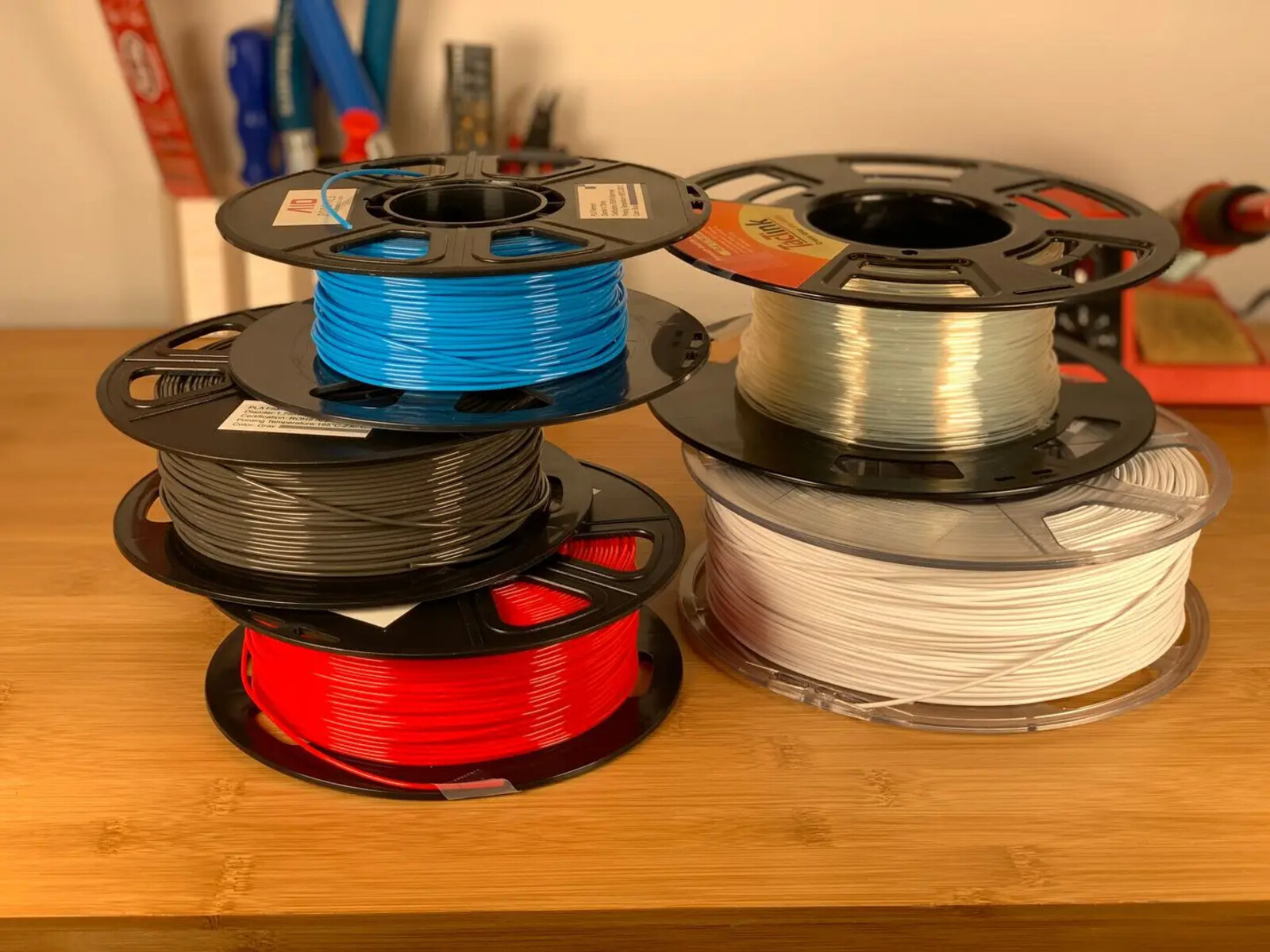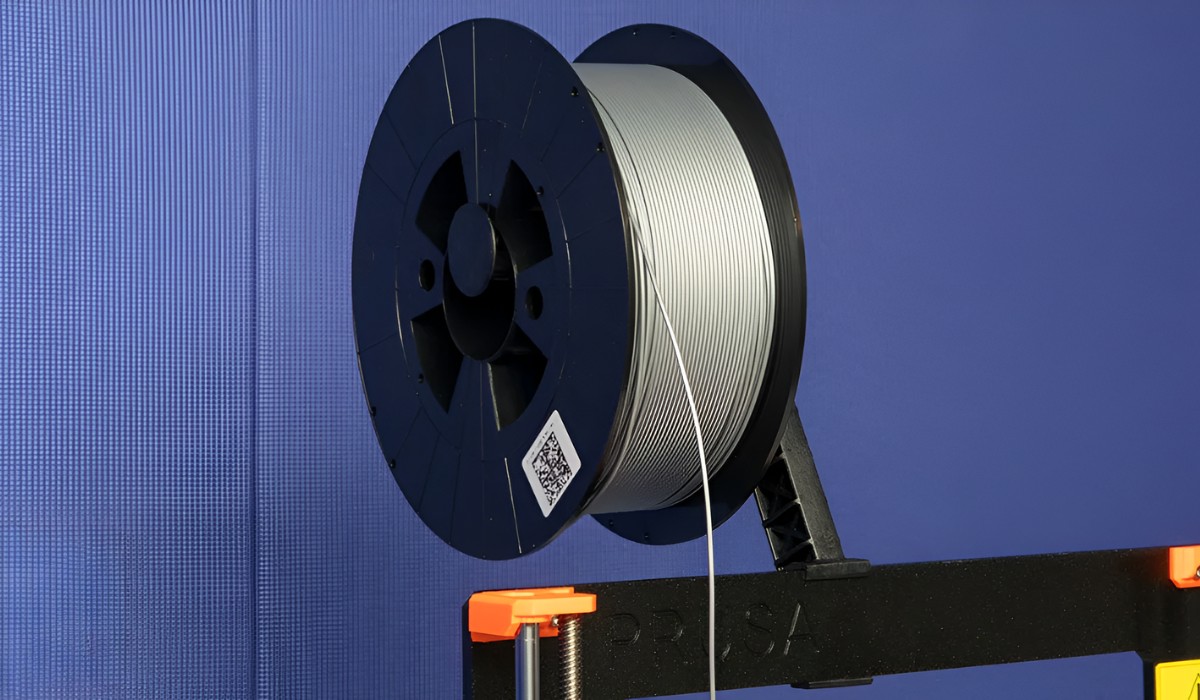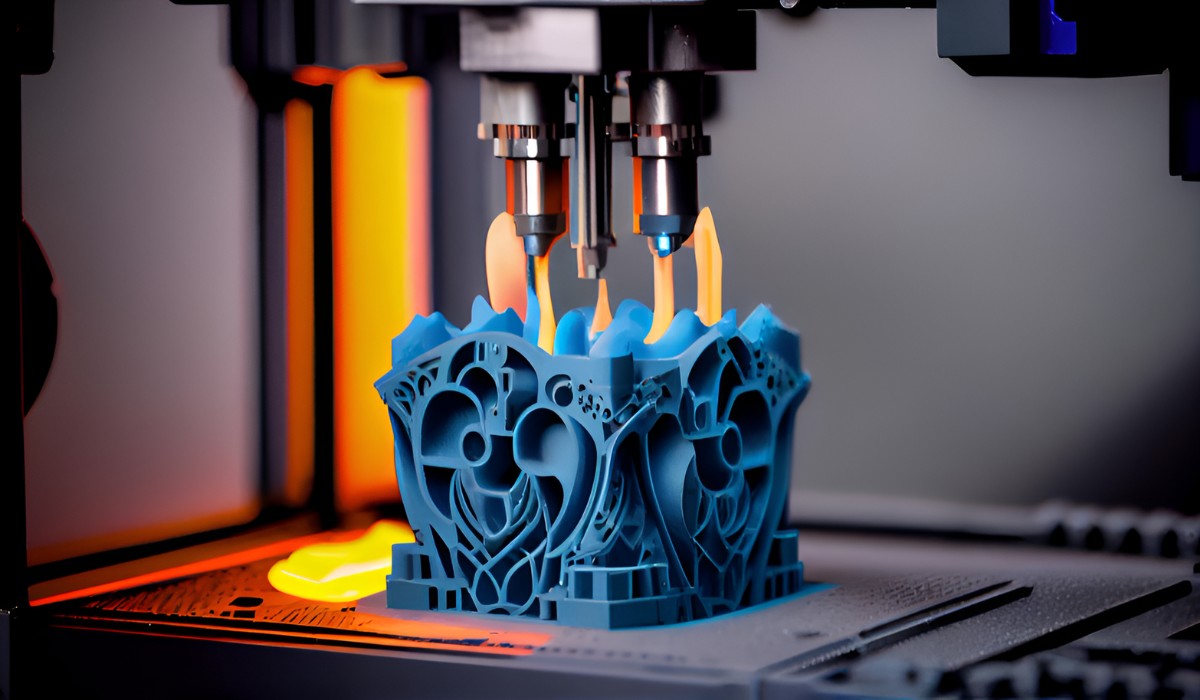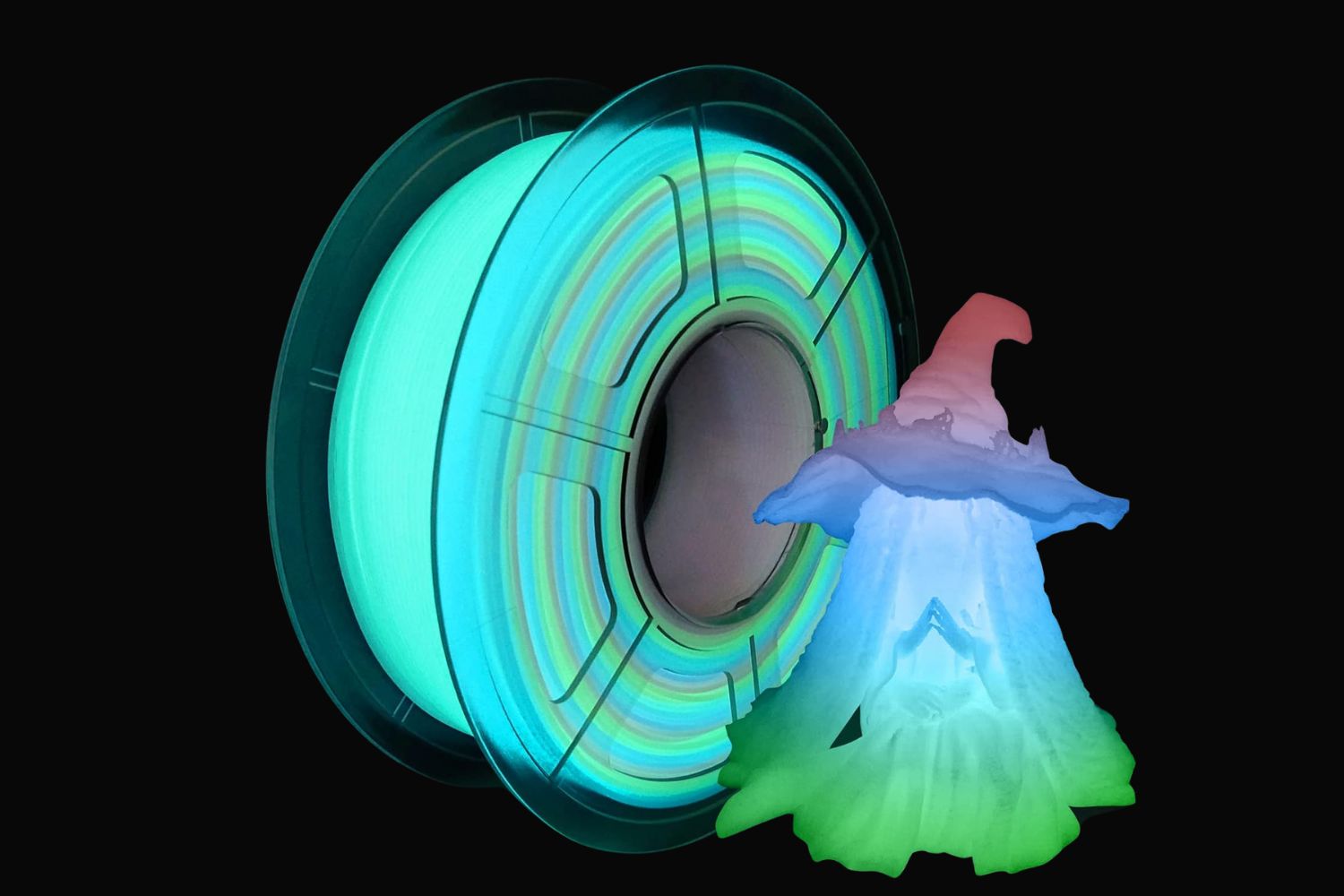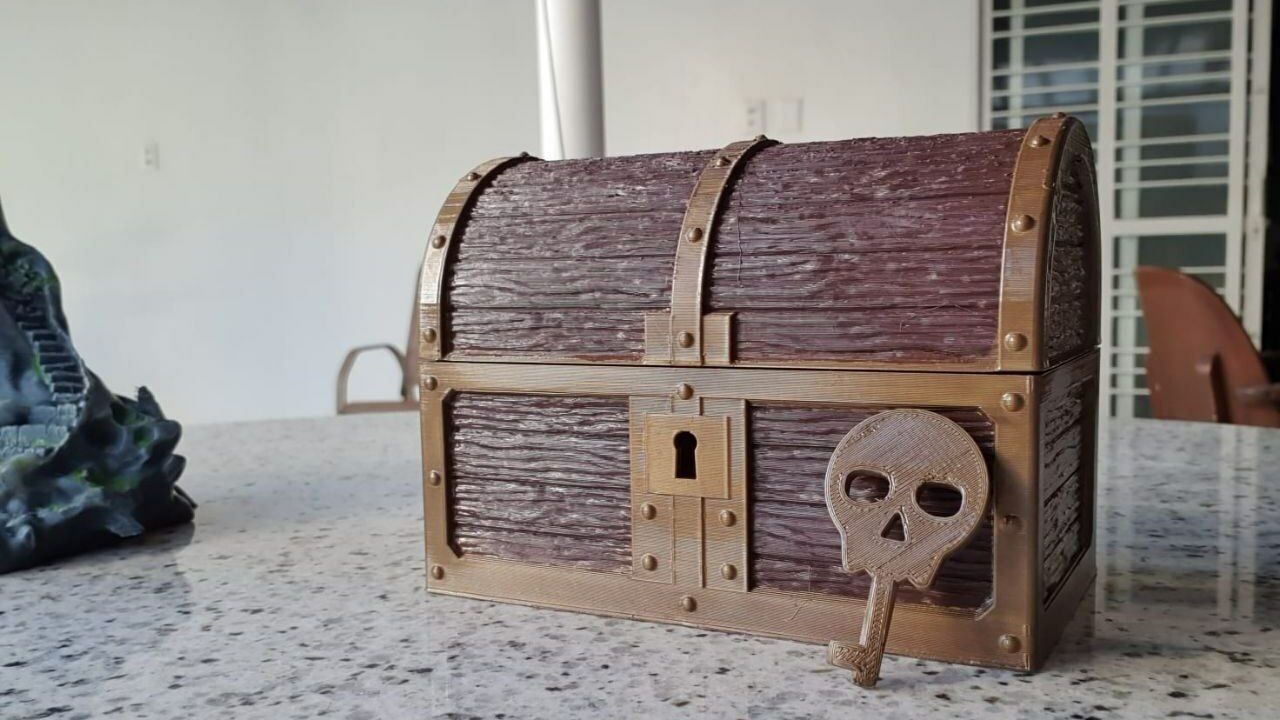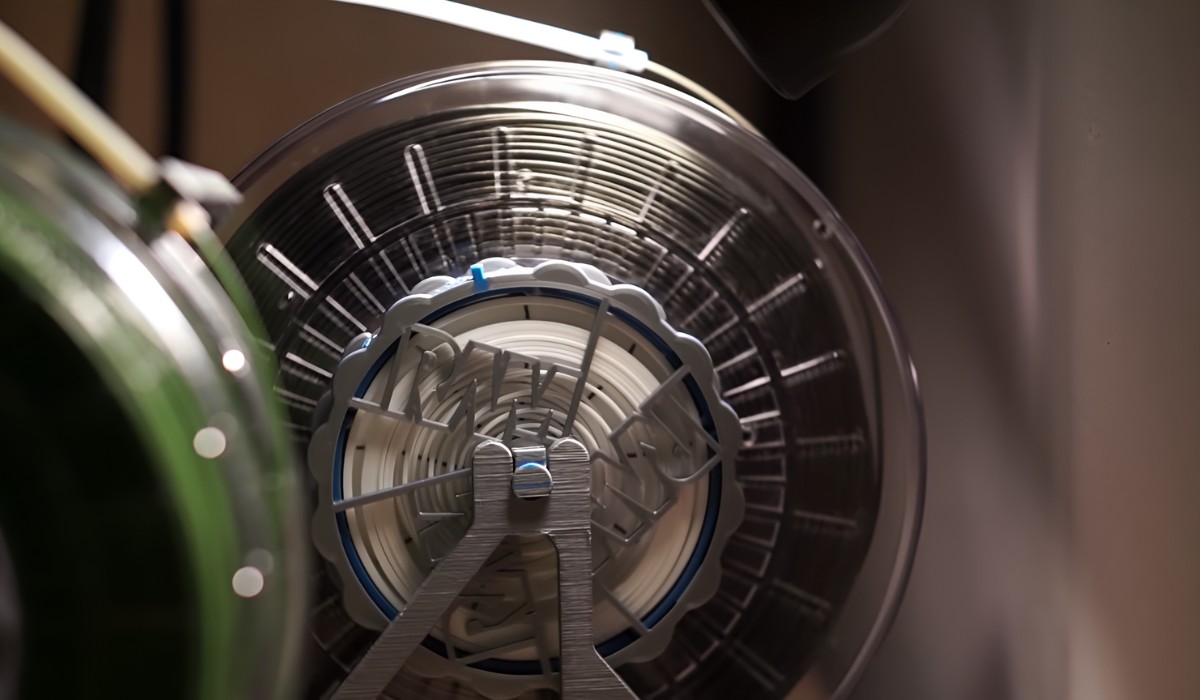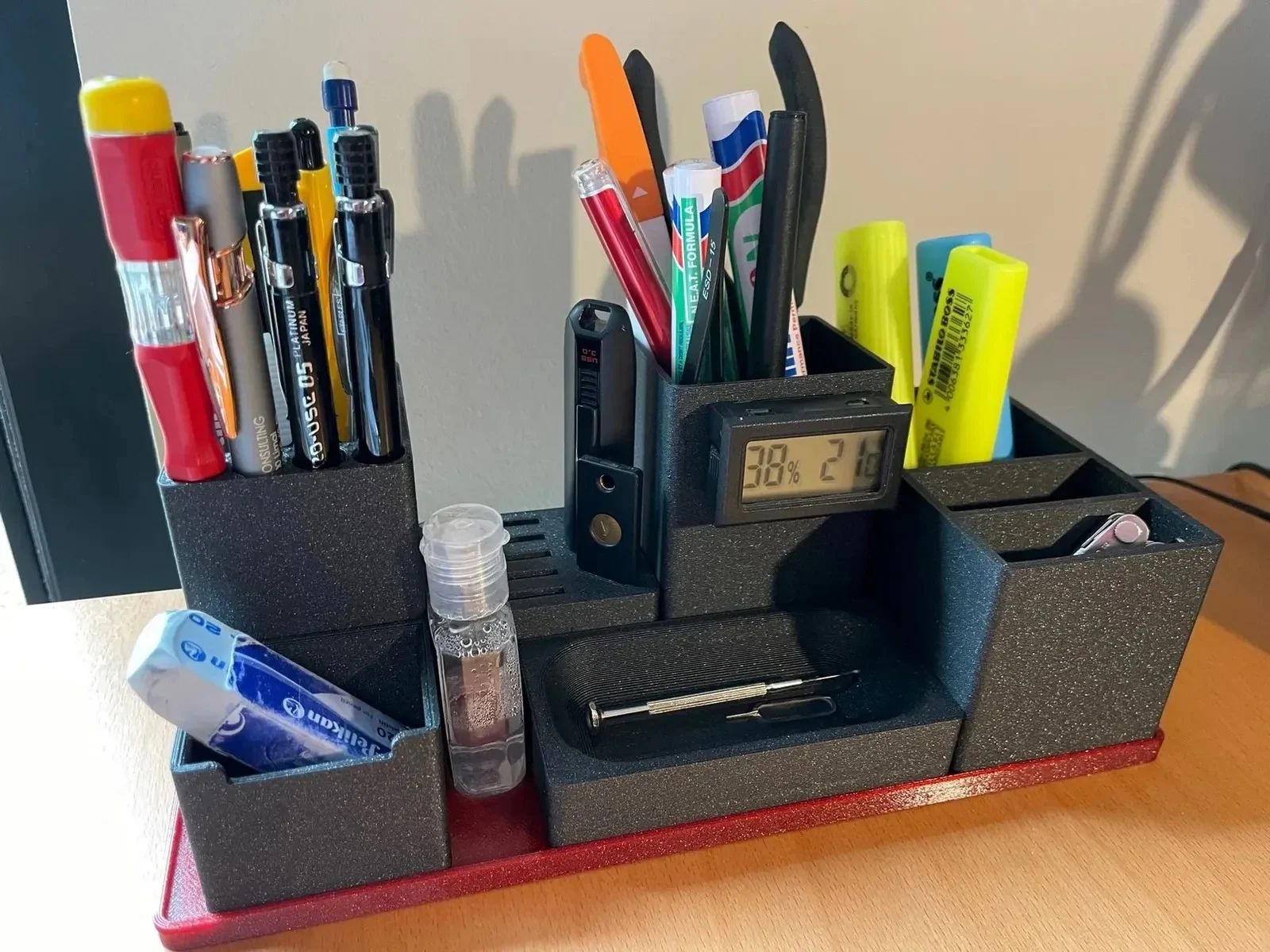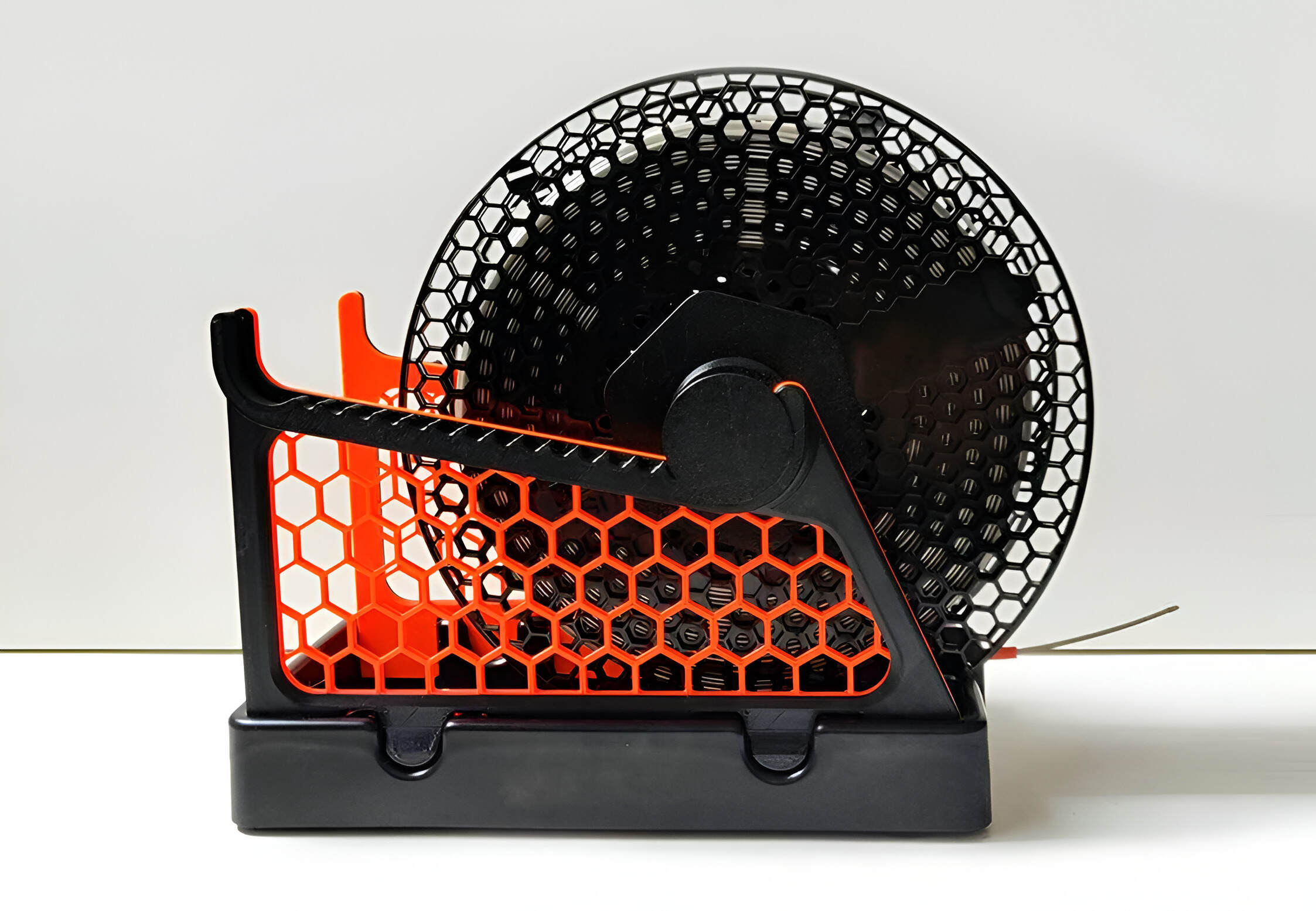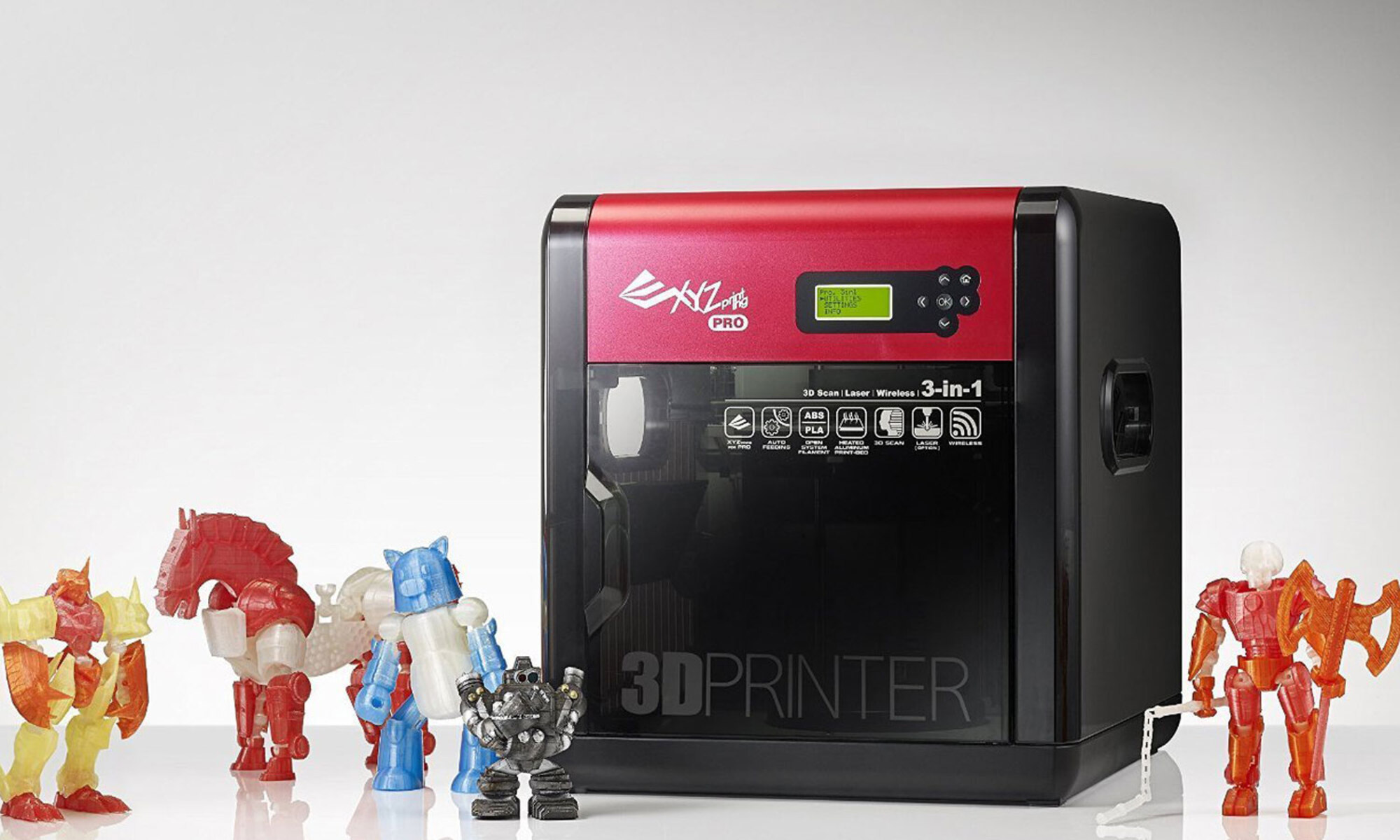Introduction
Welcome to the world of filament 3D printing, a revolutionary technology that has transformed various industries and captured the imagination of designers, engineers, and hobbyists alike. Through the magic of additive manufacturing, filament 3D printing has made it possible to turn digital designs into tangible objects with incredible precision and detail.
Whether you’re a beginner exploring the world of 3D printing or a seasoned professional looking for new possibilities, understanding the fundamentals of filament-based 3D printing is essential. In this article, we will delve into the fascinating world of filament 3D printing, exploring its mechanisms, materials, applications, and tips for success.
Imagine having the power to create objects of any shape and complexity, right at your fingertips. That’s the beauty of filament-based 3D printing. Unlike traditional manufacturing methods that involve subtractive techniques such as milling or carving, 3D printing builds objects layer by layer, with each layer fused together to create a solid structure.
Since its inception, 3D printing has evolved significantly, with filament-based printing emerging as one of the most popular methods. Filament 3D printing utilizes a spool of thermoplastic material, known as filament, which is heated to its melting point and extruded through a nozzle. The printer moves the nozzle precisely according to the design specifications, depositing the molten material layer by layer, resulting in the creation of the desired object.
One of the major advantages of filament-based 3D printing is its versatility. With a wide variety of filament materials available, ranging from PLA (Polylactic Acid) to ABS (Acrylonitrile Butadiene Styrene) and more, the possibilities are virtually endless. Each material has unique properties that make it suitable for different applications, allowing creators to explore a multitude of projects.
In the following sections, we’ll dive deeper into the key aspects of filament 3D printing, including how it works, the types of filament materials, the pros and cons, popular applications, factors to consider when choosing filament, and tips for successful printing. By the end of this article, you’ll have a comprehensive understanding of filament 3D printing, empowering you to embark on exciting and innovative projects.
What is Filament 3D Printing?
Filament 3D printing, also known as fused filament fabrication (FFF), is a widely used technique in the world of additive manufacturing. It involves the creation of three-dimensional objects by depositing molten thermoplastic material in a precise manner, layer by layer, to build the desired structure.
At its core, filament 3D printing starts with a spool of filament, which is a long, thin strand of thermoplastic material. This filament is fed into a heated extruder, where it is melted into a semi-liquid state. The molten filament is then pushed through a small nozzle, usually with a diameter of around 0.4 millimeters, and extruded onto a build plate or previous layers of the object being printed.
As the extruded filament cools down, it solidifies, creating a solid layer. The printer’s mechanisms then shift, moving the nozzle or the build plate to position it for the next layer. This process is repeated layer by layer until the entire object is built, following the instructions provided by the digital design.
The key component in filament 3D printing is the filament material itself. Different types of thermoplastics can be used as filament, each offering its unique set of properties and characteristics. Common materials include PLA, ABS, PETG, TPU, and many others, each with its specific advantages and limitations.
One of the factors that make filament 3D printing so popular is its accessibility and affordability. Compared to other 3D printing technologies like stereolithography (SLA) or selective laser sintering (SLS), filament-based printers are more widely available and cost-effective. This makes them a popular choice for enthusiasts, hobbyists, and small businesses.
Filament 3D printing is not limited to small-scale creations; it can also be used for larger objects, albeit with some limitations. By breaking down a larger design into smaller parts that can be printed separately, it is possible to assemble them to create more substantial structures. This technique, known as “additive assembly,” allows for the printing of objects that surpass the printer’s build volume.
Overall, filament 3D printing is a versatile and accessible method for creating three-dimensional objects. Its layer-by-layer approach, combined with a wide range of available materials, opens up endless possibilities for designers, engineers, and creators of all kinds. Whether it’s prototypes, functional parts, or artistic creations, filament 3D printing offers the ability to turn digital designs into physical reality.
How Does Filament 3D Printing Work?
Filament 3D printing technology operates on a relatively simple but precise process. It involves several steps, from preparing the digital design to the actual printing of the object. Let’s take a closer look at how filament 3D printing works:
1. Digital Design: The process begins with the creation of a digital 3D model using specialized software or by downloading existing designs from online repositories. This virtual model serves as the blueprint for the object to be printed.
2. Slicing: The 3D model is then sliced into numerous horizontal layers using slicing software. Each layer represents a cross-section of the object, and the software generates instructions for the 3D printer to create each layer.
3. Preparing the Printer: Before printing, the printer needs to be prepared. This involves setting up the build plate, ensuring proper adhesion, and loading the filament spool into the printer, which is often guided through a feeding tube into the extruder.
4. Heating the Filament: Once the printer is ready, it heats the filament to its melting temperature. The temperature varies depending on the type of filament being used. The spool of filament is placed in a heated chamber or near the extruder, where the heat softens it into a semi-liquid state.
5. Extrusion: With the filament heated and in a semi-liquid state, it is pushed by a motorized gear through the extruder. The extruder consists of a hot end and a nozzle. The filament passes through the hot end, which further heats it and ensures it remains in a molten state. The molten filament is then extruded through a small nozzle, typically with a diameter of 0.4 mm, allowing for precise control over the amount of material being deposited.
6. Layer-by-Layer Deposition: The printer moves the extruder and build plate according to the instructions generated by the slicing software. The extruder deposits the molten filament onto the build plate or the previous layers, following the contours of the digital design. As each layer is completed, the filament quickly cools down and solidifies, fusing with the previous layers to form a solid structure. This process continues layer by layer until the entire object is printed.
7. Post-Processing: After the printing is complete, the object may require some post-processing. This can include removing support structures, sanding or polishing the surface, or applying finishing touches to achieve the desired result.
The success of filament 3D printing relies on precise calibration, proper temperature control, and accurate layer deposition. With advancements in technology, 3D printers now offer various features such as heated beds, auto-leveling systems, and multi-material capabilities, further enhancing the printing process.
Understanding how filament 3D printing works is the foundation for successfully utilizing this technology. It allows designers and creators to achieve remarkable precision, intricate details, and complex geometries in their printed objects, opening up a world of possibilities for innovation and creativity.
Types of Filament Materials
One of the key advantages of filament 3D printing is the wide range of materials available for use as filaments. Each material offers unique properties, allowing creators to choose the best filament for their specific project requirements. Here are some of the most commonly used filament materials:
1. PLA (Polylactic Acid): PLA is one of the most popular and beginner-friendly filament materials. Derived from renewable resources such as cornstarch or sugarcane, PLA is biodegradable, making it environmentally friendly. It has a low melting temperature, which means it requires less energy to print. PLA produces objects with a glossy finish and is commonly used for prototypes, models, and decorative items.
2. ABS (Acrylonitrile Butadiene Styrene): ABS is a durable and versatile filament that provides excellent strength and impact resistance. It has a higher melting temperature compared to PLA, making it suitable for functional parts, engineering prototypes, and mechanical components. ABS can be post-processed using acetone vapor smoothing to achieve a smoother surface finish.
3. PETG (Polyethylene Terephthalate Glycol-Modified): PETG is a popular filament known for its ease of use and durability. It combines the properties of PLA and ABS, offering good strength, impact resistance, and flexibility. PETG is also resistant to moisture and chemicals, making it suitable for outdoor applications, functional parts, and consumer products.
4. TPU (Thermoplastic Polyurethane): TPU is a flexible and elastic filament known for its rubber-like properties. It can be stretched and bent without breaking, making it ideal for producing objects that require flexibility or cushioning. TPU is commonly used for phone cases, shoe soles, and other applications that require impact absorption.
5. Nylon: Nylon filament is known for its strength, durability, and versatility. It offers excellent mechanical properties, including high impact resistance and low friction. Nylon is used in applications that require toughness and durability, such as functional parts, gears, and bearings.
6. HIPS (High Impact Polystyrene): HIPS is a lightweight filament that is often used as a support material for printing complex objects. It is soluble in Limonene, a common solvent, which makes it easy to remove after printing. HIPS is commonly used in conjunction with ABS filament to create intricate and detailed prints.
7. Wood, Metal, and Specialty Filaments: In addition to the standard filaments, there are also specialty filaments available that can mimic the appearance and properties of wood, metal, carbon fiber, and more. These filaments allow for unique finishes and textures, expanding the possibilities for customized and visually appealing prints.
It’s important to consider the specific characteristics of each filament material when choosing the right one for your project. Factors such as strength, flexibility, temperature resistance, biodegradability, and appearance will influence the suitability of the filament for your desired application.
By selecting the appropriate filament material, you can achieve the desired functionality, aesthetics, and performance in your 3D printed objects, opening up new creative opportunities for your designs.
Pros and Cons of Filament 3D Printing
Filament 3D printing offers a plethora of benefits that have contributed to its popularity among hobbyists, professionals, and industries. However, like any technology, it also has its limitations. Let’s examine the pros and cons of filament 3D printing:
Pros:
- Versatility: Filament 3D printing allows for the creation of a wide variety of objects, ranging from prototypes and functional parts to artistic creations and customized products.
- Accessibility: Filament-based 3D printers are widely available and come in a range of price points, making them accessible to hobbyists, small businesses, and educational institutions.
- Material Variety: There is a broad selection of filament materials available, each with unique properties, allowing for customization and achieving desired characteristics in printed objects.
- Cost-Effective Prototyping: Filament 3D printing provides a cost-effective way to produce prototypes, reducing the time and expenses typically associated with traditional manufacturing methods.
- Layer-by-Layer Control: The layer-by-layer deposition process offers precise control over the object’s geometry, allowing for intricate details, complex shapes, and the integration of internal structures.
- Low Setup Time: Compared to other 3D printing methods, filament-based printing requires minimal setup time, making it more convenient for quick prototyping or small-scale production.
Cons:
- Print Speed: Filament 3D printing can be a time-consuming process, especially for large and complex objects, as each layer needs to be deposited and solidified before proceeding to the next.
- Layer Adhesion: Achieving optimal layer adhesion can sometimes be challenging, leading to potential weaknesses between layers and affecting the overall strength of the printed object.
- Surface Quality: Depending on the filament material and printer settings, the surface finish of filament 3D printed objects may require post-processing to achieve a smooth and polished appearance.
- Limitations in Material Properties: While there is a wide range of filament materials available, each with its unique properties, they may not possess the same mechanical or chemical properties as their traditional manufacturing counterparts.
- Printable Object Size: The maximum size of objects that can be printed in one piece is limited by the build volume of the printer. Large objects often need to be printed in smaller parts and later assembled.
- Support Structure Requirements: Some prints may require the use of support structures for overhangs or complex geometries, which adds additional complexity to the printing process and may require post-print clean-up.
Understanding the benefits and limitations of filament 3D printing is crucial for making informed decisions when choosing this technology for your projects. While it offers countless possibilities and advantages, it’s essential to consider the specific requirements of each project and determine if filament 3D printing is the most suitable approach. With careful consideration and proper utilization, filament 3D printing can unlock fascinating opportunities in design, prototyping, and manufacturing.
Applications of Filament 3D Printing
Filament 3D printing has revolutionized various industries due to its versatility, accessibility, and ability to create complex geometries. From prototyping to end-use products, this technology finds applications in a wide range of fields. Here are some of the key areas where filament 3D printing is making a significant impact:
- Prototyping: Filament 3D printing offers rapid and cost-effective prototyping, allowing designers and engineers to quickly iterate, test, and refine their designs before moving to full-scale production. It enables the creation of functional prototypes that closely resemble the final product, saving time and resources in the design and development process.
- Customized Products: Filament 3D printing enables mass customization, allowing for the production of unique, tailor-made items based on individual preferences. From personalized phone cases to custom jewelry and home decor, this technology empowers individuals to bring their ideas to life and express their creativity.
- Education and Research: Filament 3D printing has become a valuable tool in educational institutions, providing hands-on learning experiences in engineering, design, and manufacturing. It allows students to visualize concepts, create prototypes, and explore innovative solutions. In research settings, 3D printing enables the production of specialized equipment, models, and prototypes for experimentation and analysis.
- Architecture and Construction: Filament 3D printing has the potential to revolutionize the construction industry. Large-scale printers can create intricate architectural structures, building components, and even entire houses. This technology offers the possibility of faster construction with reduced waste and increased design flexibility.
- Medical and Healthcare: Filament 3D printing plays a vital role in the medical field, allowing for the creation of patient-specific anatomical models for surgical planning and training. It also enables the fabrication of custom prosthetics, orthotics, and implants. Additionally, pharmaceutical companies are exploring 3D printing for drug delivery systems and personalized medicine.
- Aerospace and Automotive: Filament 3D printing is widely used in aerospace and automotive industries for rapid prototyping, production of lightweight parts, and tooling. It allows for complex geometries and reduces material waste, contributing to improved efficiency and performance in these highly demanding sectors.
- Art and Design: Artists and designers embrace filament 3D printing as a new medium for artistic expression. It offers the ability to create intricate sculptures, jewelry, and decorative objects with unparalleled detail. Artists can experiment with unique materials and explore unconventional design possibilities.
The applications of filament 3D printing continue to expand as the technology evolves and new materials and techniques are developed. From industrial manufacturing to small-scale DIY projects, this technology has the potential to transform various sectors and enable innovation and creativity in ways previously unimaginable.
Factors to Consider When Choosing Filament
When selecting filament for your 3D printing projects, there are several factors to consider. Each filament material possesses unique characteristics that can greatly impact the final result of your prints. Here are some key factors to keep in mind when choosing filament:
- Print Object Requirements: Consider the specific requirements of your print object. Are you printing a functional part that requires strength and durability, or are you creating a decorative item where appearance is paramount? Understanding the desired properties of the final print will guide you in choosing the right filament material.
- Mechanical Properties: Different filament materials have varying mechanical properties, such as tensile strength, flexibility, and impact resistance. If your print needs to withstand mechanical stress or repetitive use, choose a filament with appropriate strength and durability.
- Heat Resistance: Some applications may require filament that can withstand high temperatures. Consider the maximum temperature your print object may encounter and select a filament material that can handle it without deforming or melting.
- Environmental Impact: Filament materials can vary in terms of their environmental impact. Some filaments, such as PLA, are derived from renewable resources and are biodegradable, making them more environmentally friendly. Others, like ABS, may have a higher carbon footprint. Consider the eco-friendliness of the filament material if sustainability is a priority for your project.
- Ease of Use: Consider the filament’s ease of use, including its compatibility with your 3D printer. Some filaments may require specific printer settings, such as temperature or bed adhesion, while others may require additional post-processing steps. Choose a filament that aligns with your printer’s capabilities and your level of expertise.
- Availability and Cost: Consider the availability and cost of the filament material. Some specialty filaments may be harder to find and more expensive, while commonly-used filaments like PLA and ABS are more readily accessible. Balancing cost with the desired properties of your print object is important when working within budget constraints.
- Color and Aesthetics: Filament materials are available in a wide range of colors and finishes. Consider the visual appeal of the filament and how it aligns with your intended design. Additionally, translucent or transparent filaments can be used to achieve unique visual effects.
- Compatibility with Special Features: If your 3D printer has special features, such as dual extruders or advanced bed leveling, consider whether the filament material is compatible with these features. Certain filaments, like flexible TPU, may require specific extruder setups or modifications.
By carefully considering these factors, you can select the appropriate filament material that will meet your specific project requirements. It’s always a good idea to experiment with different filaments and find the ones that work best for your printer and desired applications. Remember, each filament material offers its own unique advantages, so take the time to explore and discover the limitless possibilities of 3D printing.
Tips for Successful Filament 3D Printing
Filament 3D printing can be both exciting and challenging, especially if you are new to the technology. To help ensure successful prints and minimize frustration, here are some tips to keep in mind:
- Calibrate Your Printer: Proper calibration is crucial for successful filament 3D printing. Take the time to level your print bed, adjust the extruder’s height, and fine-tune other printer settings according to the manufacturer’s recommendations. This will help achieve optimal layer adhesion and improve print quality.
- Start with Basic Filaments: If you’re just getting started, begin with basic filaments like PLA or ABS. These materials are widely used, have good printability, and offer reliable results. Starting with simpler filaments allows you to familiarize yourself with the printing process before branching out to more advanced materials.
- Store Filament Properly: Filament can absorb moisture from the environment, affecting print quality. Store your filament in airtight containers or use desiccant packs to keep it dry and prevent it from becoming brittle. If your filament has absorbed moisture, consider drying it in a dehydrator before use.
- Use Quality Filament: Invest in high-quality filaments from reputable manufacturers. Low-quality filaments may contain impurities or have inconsistent diameter, which can lead to clogging, poor print quality, and failed prints. Quality filaments are more reliable and produce superior results.
- Check Nozzle Diameter: Ensure that your printer’s nozzle diameter matches the filament’s recommended nozzle size. Using a nozzle that is too small can lead to clogs, while a nozzle that is too large may affect print accuracy and resolution. Refer to the filament manufacturer’s guidelines for the appropriate nozzle size.
- Optimize Printing Parameters: Experiment with different printer settings such as nozzle temperature, print speed, layer height, and cooling fan speed to find the optimal parameters for your filament material. Fine-tuning these settings can greatly impact print quality and help achieve desired results.
- Use Support Structures Wisely: For prints with overhangs or complex geometries, consider using support structures. However, use them judiciously to minimize post-processing efforts. Adjust your slicer settings to generate only necessary support structures, avoiding excessive support material that may be difficult to remove.
- Post-Processing and Finishing: Depending on your desired outcome, post-process your prints as needed. This may include removing support structures, sanding rough edges, or applying post-processing techniques like painting or smoothing using solvents. Finishing touches can greatly enhance the final appearance of your printed objects.
- Practice Proper Maintenance: Regularly clean your printer, particularly the extruder and nozzle, to prevent clogs and improve print quality. Keep an eye on the condition of your build plate, ensuring proper adhesion for successful prints. Regular maintenance helps prolong the lifespan of your printer and ensures consistent results.
- Seek Community Support: Join online forums and communities dedicated to 3D printing. Engage with experienced users, seek advice, and share your experiences. The 3D printing community is always eager to help and can provide valuable insights and troubleshooting tips.
Remember, successful filament 3D printing requires patience, practice, and a willingness to learn from both successes and failures. Experiment with different techniques and settings, and don’t be afraid to push the boundaries of what is possible with your printer. With time and experience, you’ll refine your skills and unlock the full potential of filament 3D printing.
Conclusion
Filament 3D printing has emerged as a powerful and accessible technology that is reshaping industries and inspiring creativity. By understanding the fundamentals of filament 3D printing, including how it works, the types of filament materials available, and various tips for success, you can unlock the full potential of this remarkable technology.
Through filament 3D printing, you have the ability to turn digital designs into tangible objects with precision and intricacy. The versatility of filament-based printing allows for a wide range of applications, from prototyping and customized products to architecture, medicine, and art.
When choosing filament materials for your projects, consider the specific requirements of your prints, such as mechanical properties, heat resistance, and environmental impact. Additionally, factors like ease of use, availability, and cost should be taken into account to ensure the best results.
By following best practices such as calibrating your printer, using quality filament, optimizing printing parameters, and practicing proper maintenance, you can increase your chances of success in filament 3D printing.
Remember, filament 3D printing is not only a technological marvel but also a journey of learning and exploration. Embrace the community of 3D printing enthusiasts, seek advice, and share your experiences to enrich your understanding of this ever-evolving field.
So, whether you’re a hobbyist, a professional, or an educator, filament 3D printing offers endless possibilities for innovation, problem-solving, and creative expression. Embrace the capabilities of this technology, push the boundaries of what’s possible, and transform your ideas into tangible reality with filament 3D printing.







